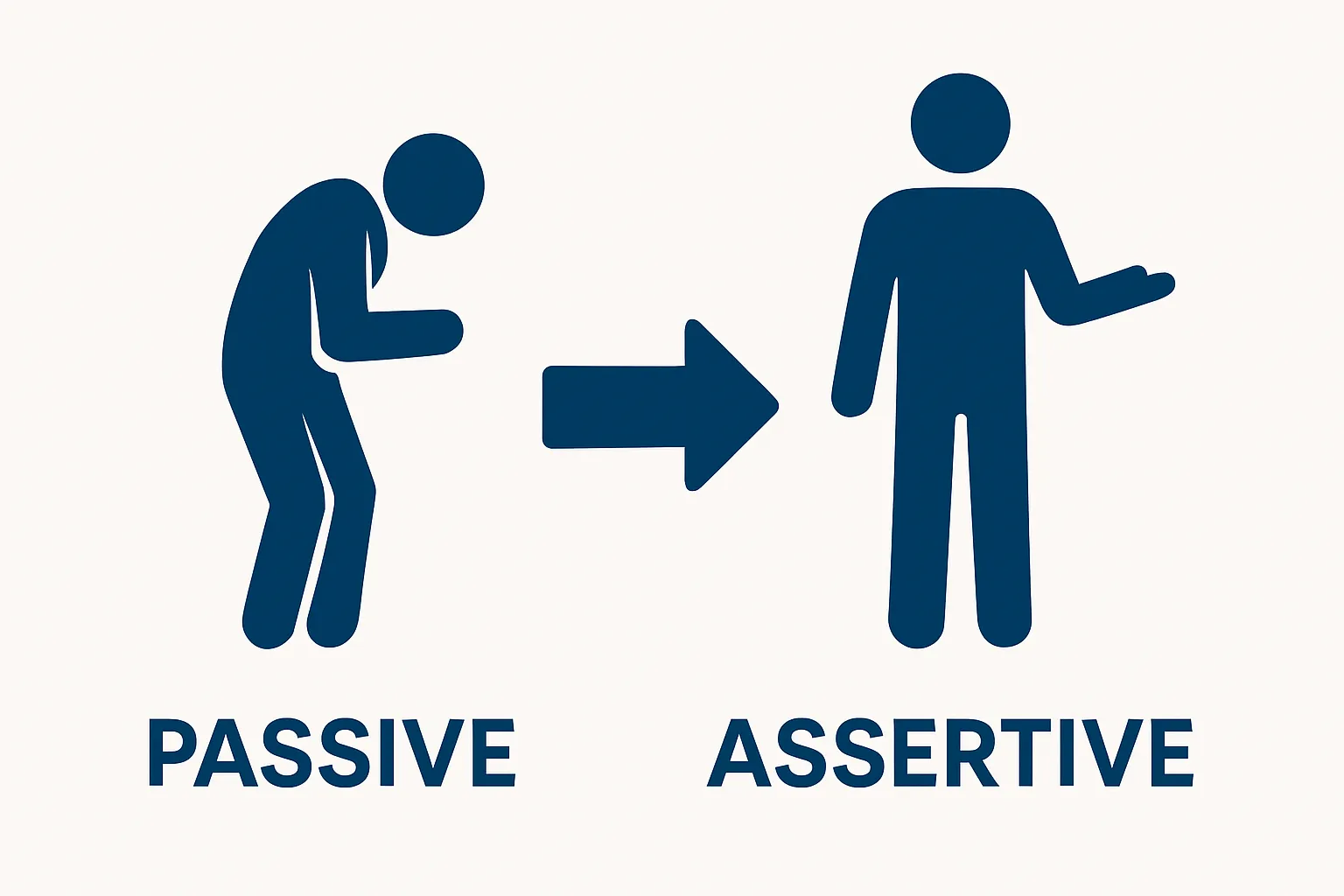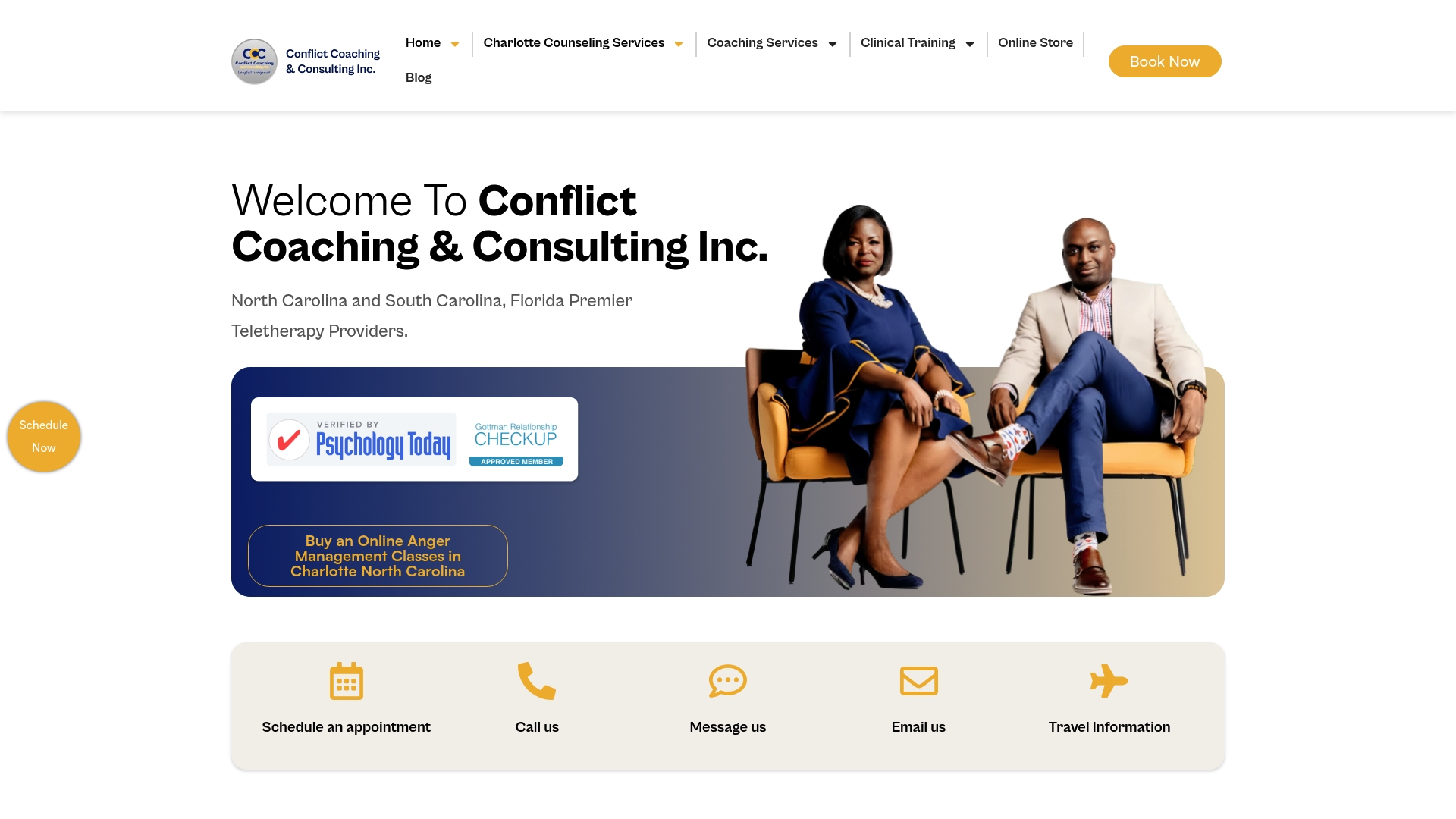Master Assertive Communication Skills for Conflict Resolution

Most people think that being a better communicator just means speaking more clearly or choosing the right words. But surprisingly, research shows that your default communication style—whether passive, aggressive, or assertive—can shape the outcome of almost every conversation you have, including conflicts and relationships. The real breakthrough happens when you realize that lasting change starts with tracking your daily interactions and reflecting on the subtle ways you express yourself.
Table of Contents
- Step 1: Assess Your Current Communication Style
- Step 2: Identify Your Communication Goals
- Step 3: Practice Active Listening Techniques
- Step 4: Express Your Thoughts and Feelings Assertively
- Step 5: Manage Conflicts With Effective Responses
- Step 6: Review and Reflect on Your Communication Progress
Quick Summary
| Key Point | Explanation |
|---|---|
| 1. Assess Your Current Style | Recognizing your communication style is essential for improvement and effective conflict resolution. |
| 2. Set Clear Communication Goals | Define specific intentions that reflect your needs and respect others’ perspectives for more meaningful conversations. |
| 3. Practice Active Listening | Engage fully in conversations by understanding the speaker’s message and emotional context to reduce conflicts. |
| 4. Express Yourself Assertively | Use “I” statements to communicate your feelings clearly and respectfully without blaming others. |
| 5. Review Your Progress Regularly | Reflect on your communication experiences to identify strengths, areas for improvement, and celebrate your growth. |
Step 1: Assess your Current Communication Style
Understanding your communication approach is the foundational step in developing assertive communication skills. Before you can improve, you need a clear snapshot of your current communication patterns and how they might be hindering effective conflict resolution.
Communication styles typically fall into three primary categories: passive, aggressive, and assertive. Most people unconsciously default to one style based on past experiences, family dynamics, and learned behaviors. Recognizing your default mode requires honest self-reflection and potentially uncomfortable insights.
The table below summarizes the three primary communication styles discussed in the guide, making it easy to compare their key characteristics and effects on conflict resolution.
| Communication Style | Main Characteristics | Typical Effects During Conflict |
|---|---|---|
| Passive | Avoids confrontation, puts others’ needs first, apologizes excessively | Feelings of resentment, unexpressed needs, unresolved issues |
| Aggressive | Interrupts often, uses loud or demanding tone, seeks to dominate | Increased defensiveness, escalation of conflict, discomfort for others |
| Assertive | Uses “I” statements, maintains clear and respectful tone, acknowledges both perspectives | Constructive problem solving, mutual understanding, healthy resolution |
Identifying Your Communication Patterns
Start by observing your interactions over several days. Pay close attention to how you respond during disagreements or stressful conversations. Do you tend to withdraw and avoid confrontation? This suggests a passive communication style. Or do you become loud, interrupt others, and demand your perspective be heard immediately? This indicates an aggressive communication approach.
Keep a communication journal where you document specific interactions. Note your emotional state, physical reactions, and the words you used. Look for recurring patterns such as:
- Apologizing excessively when you’ve done nothing wrong
- Feeling resentful after conversations where you didn’t express your true feelings
- Experiencing physical tension during conflicts
- Noticing that others seem uncomfortable or defensive when you communicate
According to Psychology Today, self-awareness is the critical first step in transforming communication habits. By objectively analyzing your current style, you create a roadmap for personal growth and more effective interactions.

Tools for Self-Assessment
Consider using structured communication assessment tools to gain deeper insights. Online quizzes and professional communication style inventories can provide structured frameworks for understanding your current approach. Many therapists and counseling centers offer these assessments, which can reveal nuanced aspects of your communication that might not be immediately apparent.
Remember, the goal isn’t to judge yourself harshly but to develop compassionate understanding. Every communication pattern emerged as a survival strategy at some point in your life. Now, you’re simply choosing to evolve and develop more balanced, respectful ways of expressing yourself.
Step 2: Identify your Communication Goals
After understanding your current communication style, the next critical step in developing assertive communication skills involves clearly defining your interaction objectives. Communication goals provide a strategic framework that transforms random exchanges into purposeful, meaningful dialogues.
Effective communication isn’t about winning arguments or proving yourself right. Instead, it’s about creating mutual understanding, resolving conflicts constructively, and maintaining healthy relationships. Your goals should reflect a balanced approach that respects both your needs and the perspectives of others.
Mapping Your Desired Outcomes
Begin by visualizing your ideal communication scenario. What does success look like in your most challenging interactions? Perhaps you want to express your feelings without triggering defensiveness, set clear boundaries without creating tension, or navigate difficult conversations without emotional escalation.
Break down your communication goals into specific, actionable intentions:
- Expressing yourself clearly and calmly
- Listening actively and empathetically
- Maintaining emotional composure during disagreements
- Seeking collaborative solutions rather than competitive outcomes
- Protecting your personal boundaries respectfully
Harvard Business Review emphasizes that successful communication goals require emotional intelligence and strategic thinking. By establishing clear objectives, you create a roadmap that guides your interactions toward more positive, productive outcomes.
Alignment and Adaptability
Understand that communication goals are not rigid scripts but flexible frameworks. They should adapt to different contexts and relationships while maintaining core principles of respect, clarity, and mutual understanding. A goal that works perfectly with a colleague might need slight modifications when communicating with a partner or family member.
Consider creating a personal communication mission statement that encapsulates your core objectives. This might sound like: “I aim to communicate with honesty, empathy, and respect, seeking understanding rather than dominance in my interactions.” Such a statement serves as a personal compass, guiding your communication approach across various scenarios and relationships.
Step 3: Practice Active Listening Techniques
Active listening transforms assertive communication skills from theoretical concepts into powerful real-world interactions. This technique goes far beyond simply hearing words it involves completely engaging with the speaker’s message, emotional context, and underlying intentions.
Most people listen with the intent to respond, not to understand.
Active listening requires a profound mindset shift where you suspend your inner narrative and genuinely focus on comprehending the other person’s perspective. This approach creates deeper connections and reduces potential conflicts before they escalate.
The Art of Intentional Listening
Begin by creating a physical environment conducive to focused listening. Put away digital devices, maintain comfortable eye contact, and position your body in an open, receptive posture. Your nonverbal signals communicate as powerfully as your words. Lean slightly forward, keep your arms uncrossed, and provide subtle visual cues that demonstrate you are fully present.
Practice these core active listening strategies:
- Paraphrase what you’ve heard to confirm understanding
- Ask clarifying questions without judgment
- Reflect the emotional undertones of the speaker
- Avoid interrupting or preparing your response while they speak
- Validate the speaker’s feelings, even if you disagree with their perspective
According to Psychology Today, active listening creates psychological safety, allowing individuals to feel heard and respected. When people sense genuine attention, they become more open, collaborative, and willing to engage in constructive dialogue.
Developing Listening Mastery
Consider recording practice conversations with a trusted friend or partner to analyze your listening patterns. Review the recordings to identify moments where you might have interrupted, shifted focus, or became defensive. These self-reflective exercises help you recognize unconscious communication habits and gradually refine your approach.
Remember that active listening is a skill that improves with consistent practice. Some conversations will feel more challenging than others, but each interaction provides an opportunity to enhance your emotional intelligence and communication effectiveness. Approach each dialogue with curiosity, empathy, and a genuine desire to understand, rather than to be understood.
Step 4: Express your Thoughts and Feelings Assertively
Assertive expression represents the cornerstone of effective communication skills, transforming how you articulate personal needs, boundaries, and emotional experiences. This step moves beyond passive submission or aggressive confrontation, creating a balanced approach that honors both your perspective and the other person’s dignity.
Asserting yourself isn’t about winning or dominating conversations. It’s about communicating authentically while maintaining respect and empathy. The goal is to create an environment where your message is heard clearly and compassionately.
Constructing Powerful Assertive Statements
Develop communication strategies that blend honesty with emotional intelligence. Use “I” statements that focus on your personal experience without accusation. For instance, instead of saying “You always ignore me,” reframe the sentiment as “I feel frustrated when I don’t feel heard during our conversations.”
Key components of assertive expression include:
- Maintaining a calm, steady tone of voice
- Speaking with clear, direct language
- Acknowledging the other person’s perspective
- Expressing feelings without blame
- Requesting specific changes or actions
APA emphasizes that assertive communication is a skill that balances personal needs with interpersonal respect. By expressing yourself thoughtfully, you create opportunities for genuine understanding and collaborative problem solving.
If you’re struggling with managing intense emotions during difficult conversations, learn more about healthy anger management techniques. These complementary strategies can help you maintain composure and communicate more effectively.
Practice your assertive communication in low-stakes situations first.
 Start with minor disagreements or conversations with trusted friends where the emotional risk feels manageable. Record yourself or ask a trusted friend to provide feedback on your communication style. Pay attention to your body language, tone, and the clarity of your message.
Start with minor disagreements or conversations with trusted friends where the emotional risk feels manageable. Record yourself or ask a trusted friend to provide feedback on your communication style. Pay attention to your body language, tone, and the clarity of your message.
Remember that assertive communication is a skill that develops with consistent practice. Some conversations will feel more challenging than others, but each interaction provides an opportunity to refine your approach. Approach each dialogue with self-compassion, recognizing that communication is a journey of continuous learning and growth.
Step 5: Manage Conflicts with Effective Responses
Assertive communication skills reach their true potential when transformed into strategic conflict management techniques. This step moves beyond expressing yourself to navigating complex emotional landscapes with precision, empathy, and emotional intelligence.
Conflict is not inherently negative. It represents an opportunity for deeper understanding, growth, and relationship strengthening when approached with the right mindset and tools. Your goal is to transform potential confrontations into collaborative problem solving sessions.
Strategic Conflict Navigation
When tensions rise, your first response becomes critical. Pause before reacting. Take a deep breath and create mental space between the trigger and your response. This momentary pause allows you to shift from an emotional, reactive state to a calm, strategic approach.
Consider these fundamental conflict management strategies:
- Recognize and validate the other person’s emotions
- Separate the problem from the person
- Focus on shared goals and mutual understanding
- Remain flexible and open to alternative perspectives
- Avoid defensive or accusatory language
Harvard Program on Negotiation highlights that successful conflict resolution depends on creating an environment of mutual respect and collaborative problem solving.
If you find yourself struggling with interpersonal tensions, discover effective strategies for controlling anger in relationships. These complementary techniques can provide additional tools for maintaining emotional balance.
Practice reframing conflicts as shared challenges rather than battles to be won. Use collaborative language that invites cooperation. Instead of statements that create defensiveness like “You always do this,” try “How can we work together to solve this?” This approach transforms potential confrontations into opportunities for mutual understanding and joint problem solving.
Remember that mastering conflict management is a skill developed through consistent practice and self reflection. Some interactions will feel more challenging than others, but each presents an opportunity to refine your approach, deepen your emotional intelligence, and build more meaningful, resilient relationships.
Step 6: Review and Reflect on Your Communication Progress
Reviewing and reflecting on your assertive communication skills transforms learning into lasting personal growth. This critical step moves beyond practicing techniques to understanding your deeper communication patterns, celebrating improvements, and identifying areas for continued development.
Self reflection is not about harsh self criticism, but compassionate observation. You are mapping your communication journey, recognizing both your strengths and the nuanced areas where you can evolve your interpersonal approach.
Systematic Communication Assessment
Establish a structured review process that goes beyond subjective impressions. Create a communication journal where you document specific interactions, noting your emotional state, communication approach, and the outcomes. Track metrics like:
- Emotional regulation during challenging conversations
- Number of conflicts successfully de escalated
- Instances where you expressed boundaries clearly
- Moments of active listening and empathy
- Personal comfort level during difficult discussions
Psychology Today emphasizes that structured self reflection enables meaningful personal transformation by providing objective insights into behavioral patterns.
If you need additional support in understanding your progress, explore our comprehensive guide on managing interpersonal conflicts, which offers deeper insights into communication dynamics.
Consider scheduling monthly or quarterly review sessions with yourself. During these reflective periods, examine your communication journal, identifying consistent patterns and growth areas. Look for subtle shifts in your approach. Are you becoming more patient? More empathetic? More direct without being aggressive?
This table provides a checklist you can use to review your communication progress, based on the self-reflection criteria described in the article.
| Checklist Item | Description | Completed (Yes/No) |
|---|---|---|
| Maintained emotional regulation | Stayed calm during challenging conversations | |
| De-escalated conflicts | Successfully reduced tension in interactions | |
| Expressed boundaries clearly | Communicated limits respectfully and directly | |
| Practiced active listening | Engaged fully and empathetically in dialogue | |
| Increased comfort in difficult discussions | Felt more at ease when navigating tough topics | |
| Documented communication experiences | Kept a journal or notes for self-review | |
| Noted areas for improvement | Identified strengths and growth areas |
Approach this reflection with curiosity and kindness. Communication is a lifelong skill that continuously evolves. Some weeks you’ll feel more confident, others more challenged. The key is maintaining a growth mindset that views each interaction as an opportunity for learning and improvement.
Remember that perfect communication doesn’t exist. Your goal is progress, not perfection. Celebrate your improvements, no matter how small, and approach each new conversation as a chance to practice and refine your assertive communication skills.
Ready to Put Assertive Communication Skills Into Real-World Practice?
You have learned the steps to master assertive communication and resolve conflict with clarity and respect. But if you still find yourself struggling with anger, misunderstood boundaries, or emotional disconnect in your relationships, you are not alone. Many people feel stuck after trying to self-improve, especially when old habits or high-pressure moments take over. True transformation happens with expert guidance and a safe space to practice and refine these skills.

At Mastering Conflict, you will find specialized support through services like anger management classes, couples therapy, and personalized coaching. Our evidence-based programs are designed to turn your communication strategies into real change in daily life. Take the next step now to become confident and respected in every conversation. Book your first session or explore solutions at https://masteringconflict.com.
Frequently Asked Questions
What are the key communication styles?
Communication styles typically fall into three primary categories: passive, aggressive, and assertive. Understanding your default style is crucial for improving communication skills.
How can I identify my communication patterns?
You can identify your communication patterns by observing your interactions and keeping a communication journal. Note your emotional state, reactions, and the language you use during conversations.
What techniques can help me practice active listening?
To practice active listening, create a conducive physical environment, maintain eye contact, paraphrase what you’ve heard, ask clarifying questions, and validate the speaker’s feelings.
How do I express my thoughts and feelings assertively?
Use “I” statements to focus on your experiences without blaming others, maintain a calm tone, acknowledge the other person’s perspective, and request specific changes clearly.
Recommended
- How to Deal With Parenting Conflicts
- Mastering Empathy in Conflict Resolution: A Step-by-Step Guide – Mastering Conflict
- Effective Conflict Resolution Steps for Couples, Families, and Professionals 2025 – Mastering Conflict
- Communication Skills for Couples: Guide to Connection and Conflict Resolution – Mastering Conflict
- Cultivating Social Savvy: An Assembly Show on Conflict Resolution – Scheer Genius Assembly Shows
